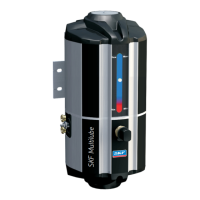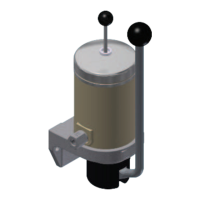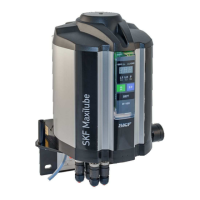11
1.20 Residual risks
Electric shock due to defective power
lead/mains plug
Inspect the power lead/power plug for damage before
starting the product
People slipping due to floor
contamination with spilled/leaked
lubricant
• Exercise caution when connecting hydraulic
connections on the product
•
Promptly apply suitable binding agents and remove the
leaked/spilled lubricant
• Follow operational instructions for handling lubricants
Tearing/damage to lines when installed
on moving machine components
If possible, do not perform installation on moving parts. if
this cannot be avoided, use flexible hose lines.
Lubrication oil spraying out due to faulty
component fitting / faulty line connection
Securely tighten all components with a suitable tool or
using the specified torques. Use hydraulic screw unions
and lines suitable for the indicated pressures.
These must
be checked for proper connection and for damage prior to
commissioning.
Electric shock from open electric motor
or active energized components
• Disconnect the mains plug (cut power) before
performing any work on electrical components
• Exercise caution when winding and unwinding the
power lead and when operating the product
Strong heating of the electric motor due
to a motor jam or continuous duty
Turn off the pump motor and let it cool down. Remedy
the cause.
Environmental contamination by
lubricants and wetted parts
Dispose of contaminated parts according to the applicable
legal/company rules
Lifecycle phases: A = Transport, B = Assembly, C = First start-up, D = Operation, E = Cleaning, F = Maintenance, G = Malfunction, repair, H
= Shutdown, K = Disposal
